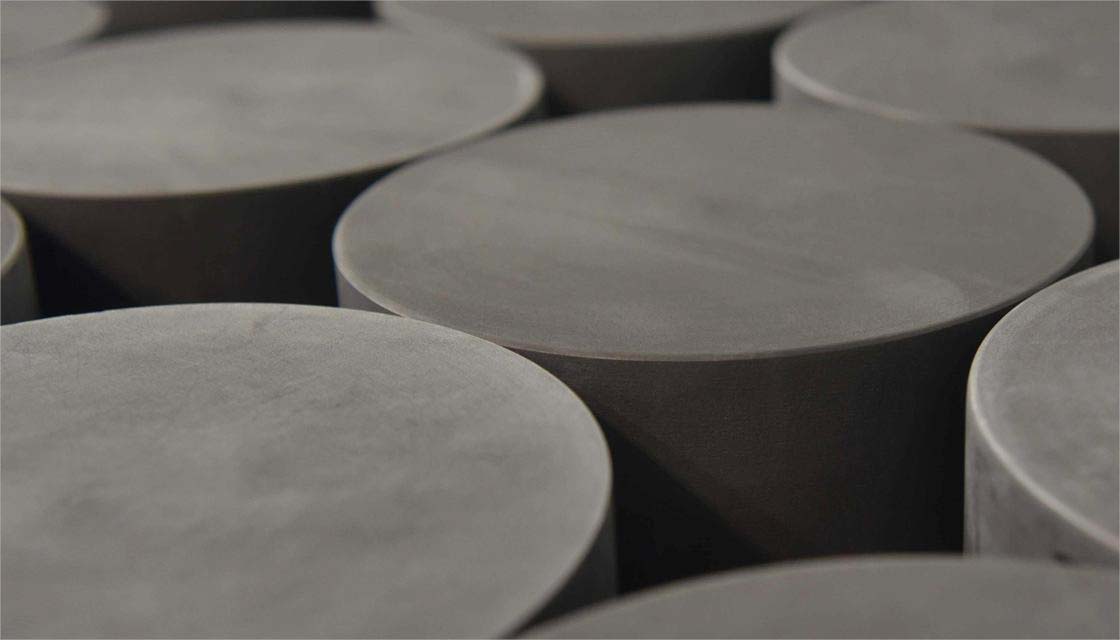
- English
- Español
- Português
- русский
- Français
- 日本語
- Deutsch
- tiếng Việt
- Italiano
- Nederlands
- ภาษาไทย
- Polski
- 한국어
- Svenska
- magyar
- Malay
- বাংলা ভাষার
- Dansk
- Suomi
- हिन्दी
- Pilipino
- Türkçe
- Gaeilge
- العربية
- Indonesia
- Norsk
- تمل
- český
- ελληνικά
- український
- Javanese
- فارسی
- தமிழ்
- తెలుగు
- नेपाली
- Burmese
- български
- ລາວ
- Latine
- Қазақша
- Euskal
- Azərbaycan
- Slovenský jazyk
- Македонски
- Lietuvos
- Eesti Keel
- Română
- Slovenski
- मराठी
- Srpski језик
3 methods of graphite molding
2023-12-04
The four main molding methods for graphite molding are: extrusion molding, molding, vibratory molding and isostatic molding. Most of the common carbon/graphite materials on the market are molded by hot extrusion and molding (cold or hot), and isostatic molding is a method with leading molding performance. Vibration molding is generally used to manufacture medium and coarse structural graphite, particle size between 0.5-2mm particle size, generally dominated by di-roasted graphitized products, density between 1.55-1.75kg/m³, coarser particles, rougher surface, can not be used for precision machining. It is mainly used in chemical industry and metal smelting.
1. Extrusion molding
Extrusion molding is the continuous extrusion of compressed powder from the mouth of the die, and then cut off according to the required length of the product. The length of the product is not limited by the working stroke of extrusion, and the quality of the extruded product is more uniform along the length. Therefore, it is suitable for the production of large and long bar, rod and tube products. Therefore, graphite electrodes, graphite blocks, graphite tubes and other products are generally extruded. If the products with large length and diameter are molded, due to the limitation of the working stroke of the vertical molding machine and the unevenness of the density of the products along the direction of the height, there are greater difficulties in their production. Extruded carbon/graphite products have low bulk density and mechanical strength, and are anisotropic. The density of the press billet does not change much in the length direction, mainly in the cross-section, the density increases with the radius from the center,, the center density is the smallest, the density on the same radius layer is the same, and the edge is the largest. Pressure billet in the extrusion process, the pressure powder and the wall have contact, will be subject to produce a large friction, resulting in friction and flow rate has a gradient, resulting in products inside the sparse outside the density, serious cases will make the pressure billet produce cracking or obvious concentric shell layer phenomenon. To the back of the roasting process brings extremely unfavorable impact.
2. Molding
Molding adopts vertical press, first according to the shape and size of the products made of molds, and then a certain number of mixed and kneaded powder into the mold on the working platform of the press, open the press on the powder to apply pressure, and maintain a certain period of time to make its shape, and then the pressed billet can be ejected from the mold. Depending on the process and equipment, it is divided into one-way pressing and two-way pressing, cold pressing and hot pressing. Molding method is suitable for pressing three directions of size is not big and in the three-way size difference is not big, uniform density, dense structure and high strength products, but the product has anisotropy. It is mainly used for the preparation of electric charcoal products and special graphite. Compared with extrusion molding, die pressing is more widely used in the production of special graphite.
3. Isostatic molding
Isostatic pressure principle for Pascal's law: applied in a closed container medium (liquid or gas) pressure, can be uniformly transmitted in all directions, in its role on the surface of the pressure is proportional to the surface area. Isostatic pressure molding technology is to put the specimen to be pressed into a closed envelope in a high-pressure cylinder, using the incompressible nature of the fluid medium and the nature of the uniform transfer of pressure, from all sides of the specimen to apply uniform pressure. When the fluid medium is injected into the pressure cylinder, according to the principle of fluid dynamics, the size of the pressure is uniformly transferred to all directions. At this time, the specimen in the high-pressure cylinder is subjected to uniform pressure in all directions. According to the temperature level at the time of molding and solidification, it is divided into cold isostatic pressure, warm isostatic pressure, and hot isostatic pressure. Due to the implementation of the pressing temperature, pressure medium is different, these three different types of isostatic pressing technology using different equipment and envelope mold materials. Isostatic pressing molding can produce a variety of homogeneous products and anisotropic products, the structure of its products is uniform, density and strength is particularly high. It is generally used for the production of special graphite, especially for the production of large-size special graphite products. At present, the molding process of carbon/graphite materials is mainly cold isostatic pressing followed by hot isostatic pressing. Hot isostatic pressing molding combines roasting and densification processes. The development direction of isostatic graphite is: sintering-hot isostatic pressing, hot isostatic impregnation-roasting and binderless hot isostatic pressing to produce isostatic graphite.
Semicorex offers high-quality Isostatic graphite products with isostatic molding. If you have any inquiries or need additional details, please don't hesitate to get in touch with us.
Contact phone # +86-13567891907
Email: sales@semicorex.com





